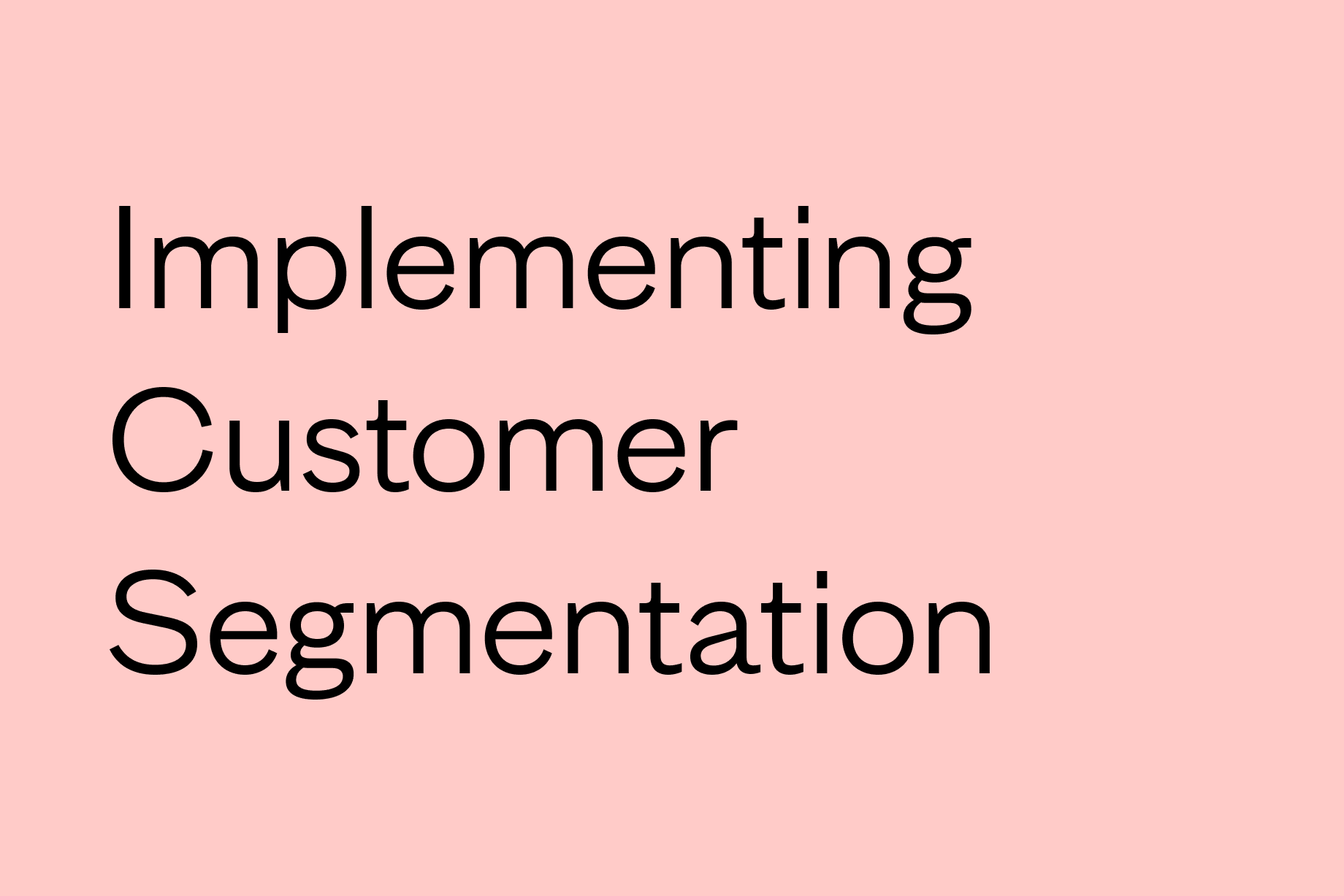Light
Listen to this Article
-
00:00 | 00:00
You might have a relevant and robust customer segmentation strategy, but it's not being implemented. Learn why and what you can do to make it actionable.
A customer segmentation strategy can be a powerful way of uniting an entire organization around a common language and view of the customer, powering persona development to drive messaging, media buying, and product development — but they also often encounter a variety of hurdles to implementation in the organization.
While the research is solid and the segmentation framework is strategically relevant, it still doesn’t get acted upon. Why is that? And more importantly, what can you do about it?
Hurdle #1: The media buying team tells you the segments “aren’t actionable” since they can’t buy media against your target segment(s).
That may not be a problem with the segmentation framework itself, but rather a sign that the research program did not carry the ball over the goal line.
In today’s digitally driven media buying environment, you ought to be able to convert the customer segmentation strategy into advertising tactics. You can do this by building custom audiences to deploy in your DMP, or by profiling target segments on existing third-party targetable audiences.
Your goal is to boost the efficiency of your ad expenditures by getting your personalized messages in front of more people who will resonate with those messages.
Most companies who take one extra research step to build media buying linkages are able to achieve impressive amounts of lift that make this investment pay for itself in no time. After all, even large research investments typically pale in comparison to the size of media budgets!
Hurdle #2: The loyalty team tells you the segments “aren’t actionable” since they can’t tell who in the CRM database belongs to each segment.
This might be a problem with the segmentation framework if the primary objective of the research was to facilitate retention and upsell efforts among current customers. In those instances, having a high degree of accuracy in database scoring may be a key success criterion.
The modelers should take findability into consideration in real-time when iterating on potential segmentation solutions and factor the relative scoring accuracy into the choice of a winning framework. This means the segmentation will need to be defined by dimensions that are clearly reflected within the information your database is capturing, typically transactions and sometimes demographics.
Most of our clients are balancing the needs of many stakeholders. So while they would like to improve their ability to deliver segment-personalized messages to their current customers, they also need to have a framework that creates enough understanding of the market to inspire brand strategy and acquisition-oriented messaging. This typically comes from an attitudes-and-needs-based segmentation framework which will be challenging to predict from a handful of transactions made on your site.
If your customers interact with you frequently, you could ask them one typing tool question per interaction and soon know with certainty what segment they belong to.
Otherwise, if you need to rely on a behavior-based lookalike model, then similar to media buyers, your CRM team should strive to improve the hit rate of targeted messaging but not expect to get the right message to the right person every time — or even most of the time.
If a target segment is 15% of your customers, having 30% of the people you send the message to be actual members of that target segment represents a doubling of your hit rate, which is quite good.
Hurdle #3: The brand manager says the target segment is “too small” to meet their revenue goals.
Your brand manager may be confusing a design target or muse with a commercial target. When we decide to prioritize our efforts against economically attractive segments with relatively high degrees of capturability, that does not mean that we will be turning away other segments’ money.
Messages or product innovations that are designed for an attractive target segment will commonly also “halo” to members of other segments. You optimize your offer for your target, but you get additional revenue from others, too.
If you have many segments and very aggressive revenue goals, you may want to select multiple targets that share some common needs or attitudes that will allow for compatible messaging with segment-specific nuances.
Some clients choose a “North Star” that’s highly resonant with their current offering and positioning, coupled with one or two “Growth Targets” where they think they can innovate or build affinity without losing their current core customers.
Hurdle #4: The creative agency says they “can’t build effective messaging” around your customer segmentation strategy since they don’t understand who the targets are as people.
Market segmentation is usually a quantitative research exercise that identifies groups of people through applying statistical techniques that are black magic to all but the savviest of researchers.
The results are often then presented in dense reports filled with charts and tables that describe how many percentage points above or below average the segment is on reams of relevant metrics.
But human beings do not absorb information this way. We have evolved as social creatures who understand individuals, not population statistics. A powerful anecdote or story is more compelling, and better remembered than an extensive set of impressive indices. A picture speaks a thousand words, and a persona allows end-users to understand the segment by getting to know a fictional character that possesses the most defining traits of that segment.
In addition, while the groups may be defined by category-specific attitudes, needs, and behaviors, the creative team usually requires more than that. They want to understand the psychographic, lifestyle, and demographic characteristics of the group (e.g., what makes a group tick in their broader life outside the category).
The best way to bring segments to life as people is through in-depth qualitative research communicated in powerful videos. Other options for getting a more well-rounded view of your target segments include appending additional third-party data or conducting an in-depth profiling survey.
Hurdle #5: Everyone is having trouble keeping the segments straight in their heads.
There are many possible root causes for this problem:
Reporting
You may have reported only quantitative data without adding a qualitative layer of illumination, leaving people unable to absorb the information. Your report may have relied too much on numbers, charts, and tables without weaving in enough words and pictures to make the results understandable and memorable.
Modeling
You may have chosen a solution with too many segments where pairs of groups only differ from each other in minor or nuanced ways. Or, you may have defined the segments using too many dimensions; a powerful 2×2 matrix yielding 4 segments may generate more understanding and action than a 27-dimensional, 8-segment solution where it’s impossible to quickly summarize what each segment is all about.
Hurdle #6: People are set in their old ways of doing business and are unsure how your customer segmentation strategy can help them be more effective.
If people don’t think that a segmented approach to their job will make them more effective, they are likely to stick to their old habits and will not invest the effort necessary to learn the segments and modify their approaches to target them.
In companies that are not accustomed to having a market segmentation, education is key. Show end-users on how best to leverage the segmentation framework. Ideation workshops can be one path to achieving this goal.
In companies that are transitioning from a previous segmentation framework, help end-users connect the dots between their old framework and the new one, being attentive to justifying how the new one is better.
An insightful customer segmentation strategy can powerfully impact all aspects of your business — but only if you overcome the common hurdles to implementation.


